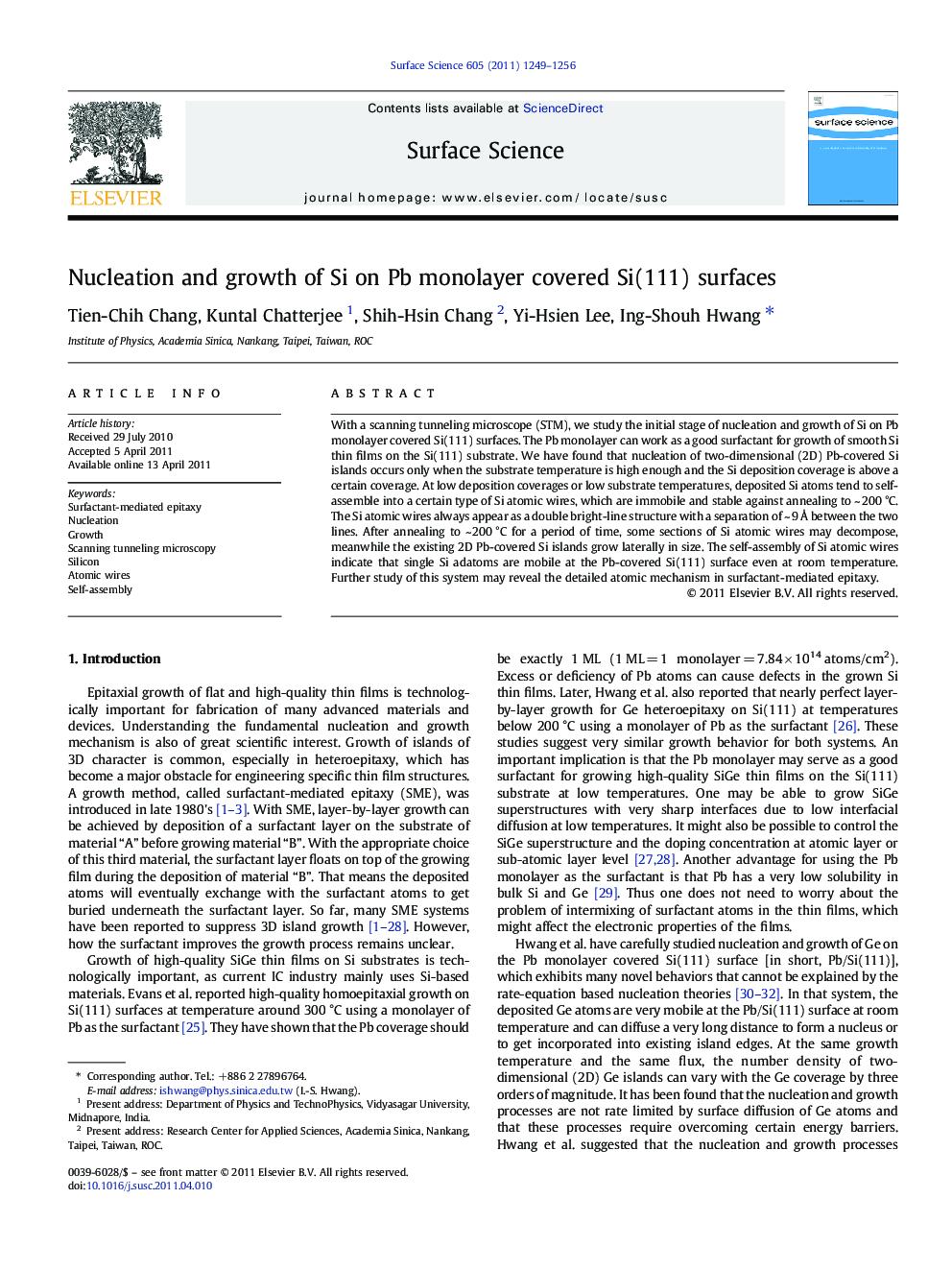| کد مقاله | کد نشریه | سال انتشار | مقاله انگلیسی | نسخه تمام متن |
|---|---|---|---|---|
| 5423337 | 1507940 | 2011 | 8 صفحه PDF | دانلود رایگان |

With a scanning tunneling microscope (STM), we study the initial stage of nucleation and growth of Si on Pb monolayer covered Si(111) surfaces. The Pb monolayer can work as a good surfactant for growth of smooth Si thin films on the Si(111) substrate. We have found that nucleation of two-dimensional (2D) Pb-covered Si islands occurs only when the substrate temperature is high enough and the Si deposition coverage is above a certain coverage. At low deposition coverages or low substrate temperatures, deposited Si atoms tend to self-assemble into a certain type of Si atomic wires, which are immobile and stable against annealing to ~ 200 °C. The Si atomic wires always appear as a double bright-line structure with a separation of ~ 9 à between the two lines. After annealing to ~ 200 °C for a period of time, some sections of Si atomic wires may decompose, meanwhile the existing 2D Pb-covered Si islands grow laterally in size. The self-assembly of Si atomic wires indicate that single Si adatoms are mobile at the Pb-covered Si(111) surface even at room temperature. Further study of this system may reveal the detailed atomic mechanism in surfactant-mediated epitaxy.
Research Highlights⺠STM study of nucleation and growth of Si on Pb monolayer covered Si(111) surfaces. ⺠Nucleation of 2D islands occurs only at high temperatures and high coverages. ⺠Si atomic wires form at low deposition coverages or low substrate temperatures. ⺠The Si atomic wires appear as a double bright-line structure.
Journal: Surface Science - Volume 605, Issues 13â14, July 2011, Pages 1249-1256